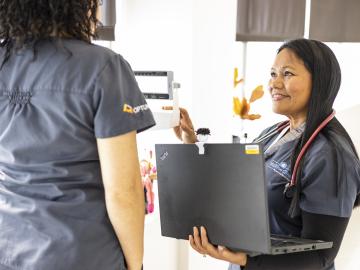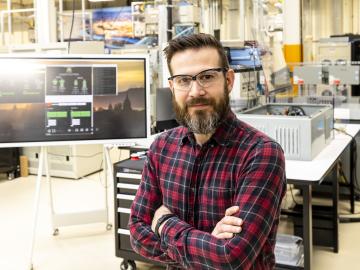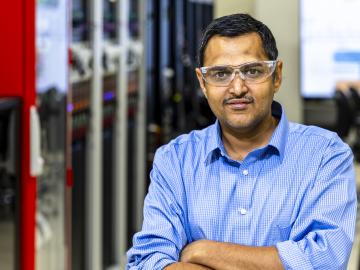
Filter News
Area of Research
- Biology and Environment (6)
- Computer Science (1)
- Electricity and Smart Grid (1)
- Energy Science (15)
- Fusion and Fission (14)
- Fusion Energy (5)
- Isotopes (2)
- Materials (17)
- Materials for Computing (1)
- National Security (12)
- Neutron Science (6)
- Nuclear Science and Technology (8)
- Quantum information Science (4)
- Supercomputing (25)
News Type
News Topics
- (-) Fusion (38)
- (-) Grid (32)
- (-) Machine Learning (37)
- (-) Molten Salt (2)
- (-) Physics (34)
- (-) Quantum Science (48)
- (-) Space Exploration (13)
- 3-D Printing/Advanced Manufacturing (56)
- Advanced Reactors (12)
- Artificial Intelligence (77)
- Big Data (45)
- Bioenergy (68)
- Biology (80)
- Biomedical (42)
- Biotechnology (25)
- Buildings (30)
- Chemical Sciences (35)
- Clean Water (16)
- Composites (11)
- Computer Science (111)
- Coronavirus (19)
- Critical Materials (5)
- Cybersecurity (14)
- Education (2)
- Emergency (3)
- Energy Storage (32)
- Environment (116)
- Exascale Computing (51)
- Fossil Energy (6)
- Frontier (44)
- High-Performance Computing (81)
- Hydropower (6)
- Isotopes (33)
- ITER (4)
- Materials (51)
- Materials Science (55)
- Mathematics (8)
- Mercury (7)
- Microelectronics (3)
- Microscopy (23)
- Nanotechnology (17)
- National Security (60)
- Neutron Science (82)
- Nuclear Energy (66)
- Partnerships (36)
- Polymers (9)
- Quantum Computing (35)
- Security (16)
- Simulation (42)
- Software (1)
- Statistics (2)
- Summit (40)
- Transportation (30)
Media Contacts

Lee's paper at the August conference in Bellevue, Washington, combined weather and power outage data for three states – Texas, Michigan and Hawaii – and used a machine learning model to predict how extreme weather such as thunderstorms, floods and tornadoes would affect local power grids and to estimate the risk for outages. The paper relied on data from the National Weather Service and the U.S. Department of Energy’s Environment for Analysis of Geo-Located Energy Information, or EAGLE-I, database.

Digital twins are exactly what they sound like: virtual models of physical reality that continuously update to reflect changes in the real world.

Waiting for answers surrounding a healthcare condition can be as stressful as the condition itself. Maria Mahbub, a research collaborator at Oak Ridge National Laboratory, is developing technology that could help providers and patients get answers sooner.

In fiscal year 2023 — Oct. 1–Sept. 30, 2023 — Oak Ridge National Laboratory was awarded more than $8 million in technology maturation funding through the Department of Energy’s Technology Commercialization Fund, or TCF.

Steven Campbell can often be found deep among tall cases of power electronics, hunkered in his oversized blue lab coat, with 1500 volts of electricity flowing above his head. When interrupted in his laboratory at ORNL, Campbell will usually smile and duck his head.

ORNL will lead three new DOE-funded projects designed to bring fusion energy to the grid on a rapid timescale.

Researchers at the Department of Energy’s Oak Ridge National Laboratory, in collaboration with NASA, are taking additive manufacturing to the final frontier by 3D printing the same kind of wheel as the design used by NASA for its robotic lunar rover, demonstrating the technology for specialized parts needed for space exploration.

ORNL, a bastion of nuclear physics research for the past 80 years, is poised to strengthen its programs and service to the United States over the next decade if national recommendations of the Nuclear Science Advisory Committee, or NSAC, are enacted.

Sreenivasa Jaldanki, a researcher in the Grid Systems Modeling and Controls group at the Department of Energy’s Oak Ridge National Laboratory, was recently elevated to senior membership in the Institute of Electrical and Electronics Engineers, or IEEE.

ORNL hosted its annual Smoky Mountains Computational Sciences and Engineering Conference in person for the first time since the COVID-19 pandemic.


